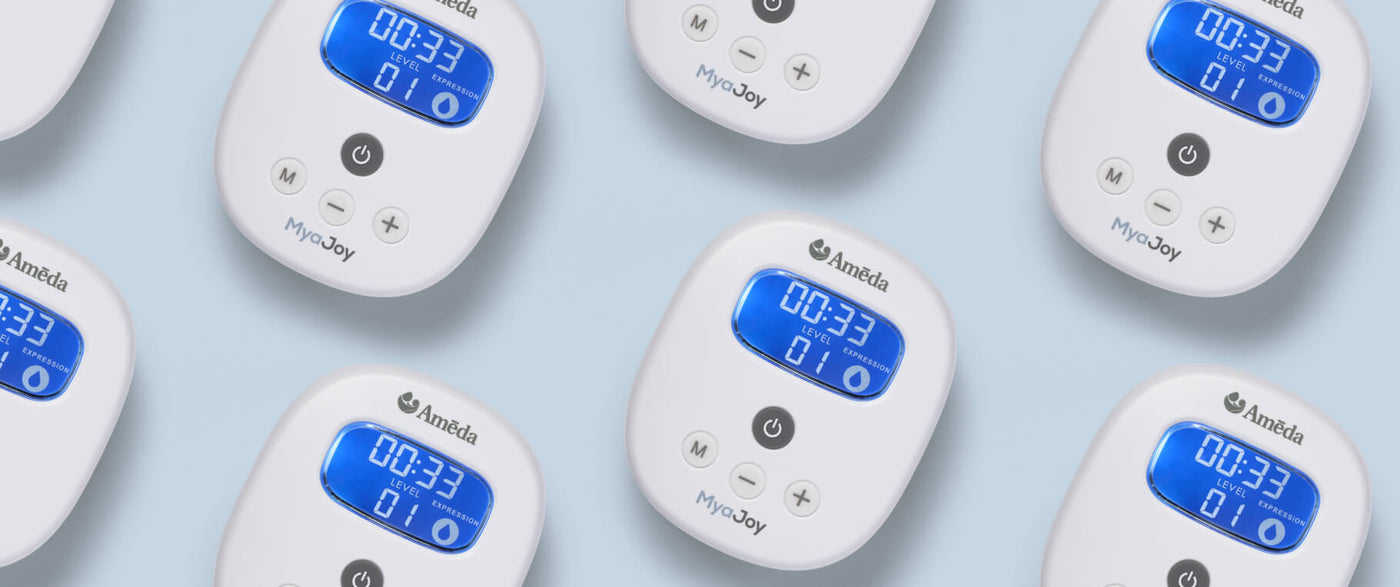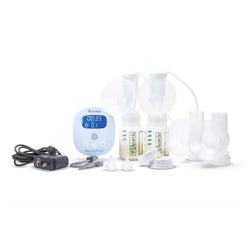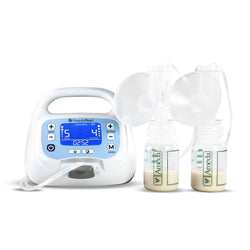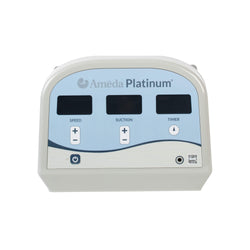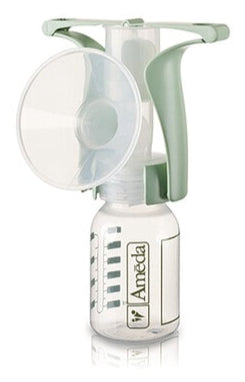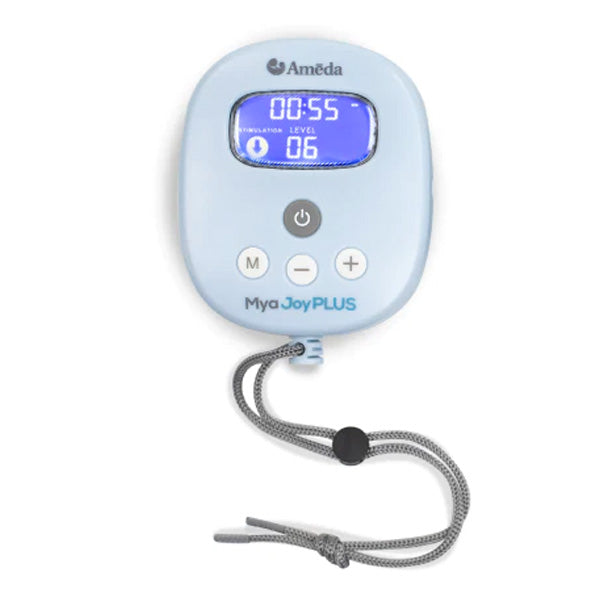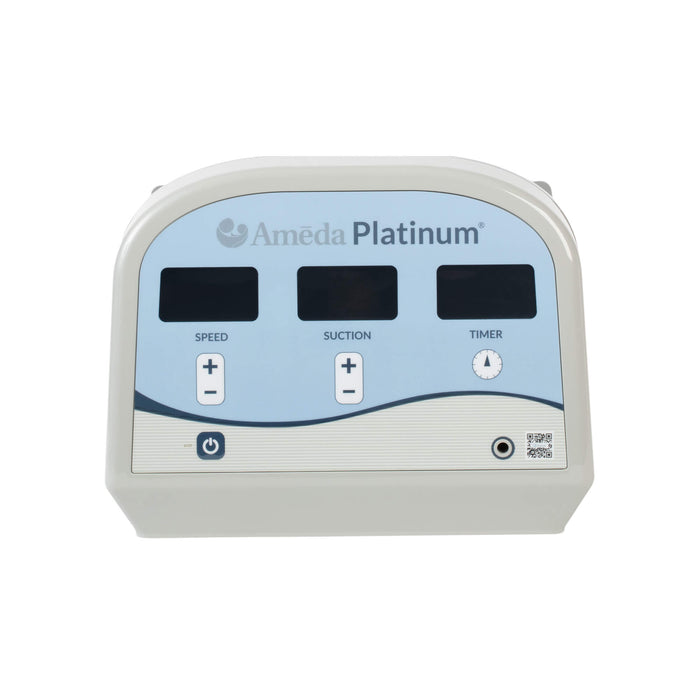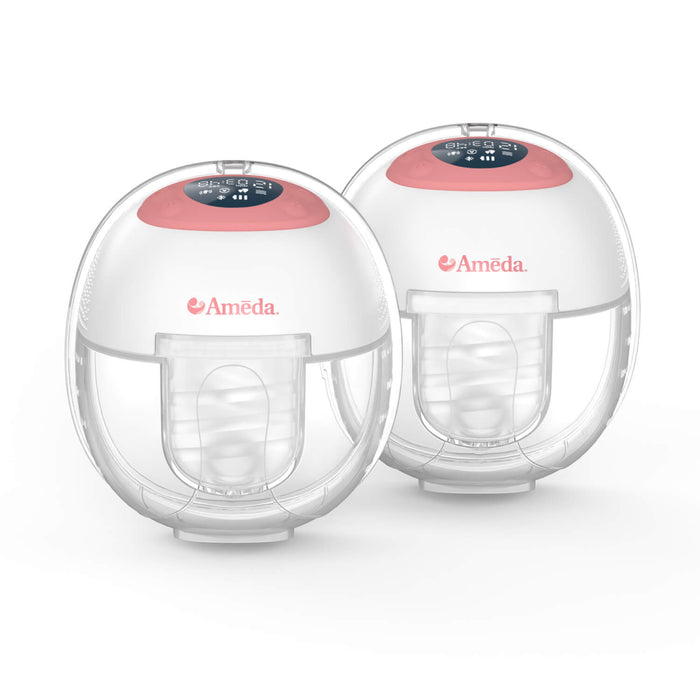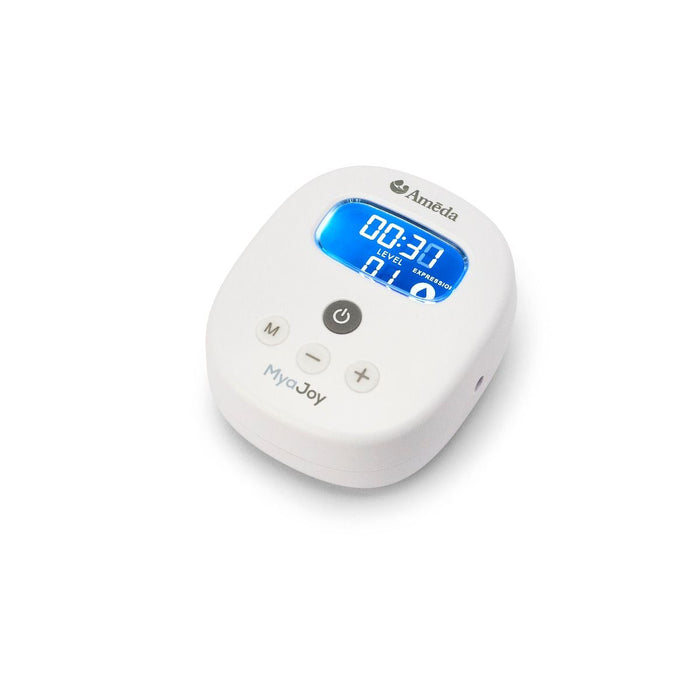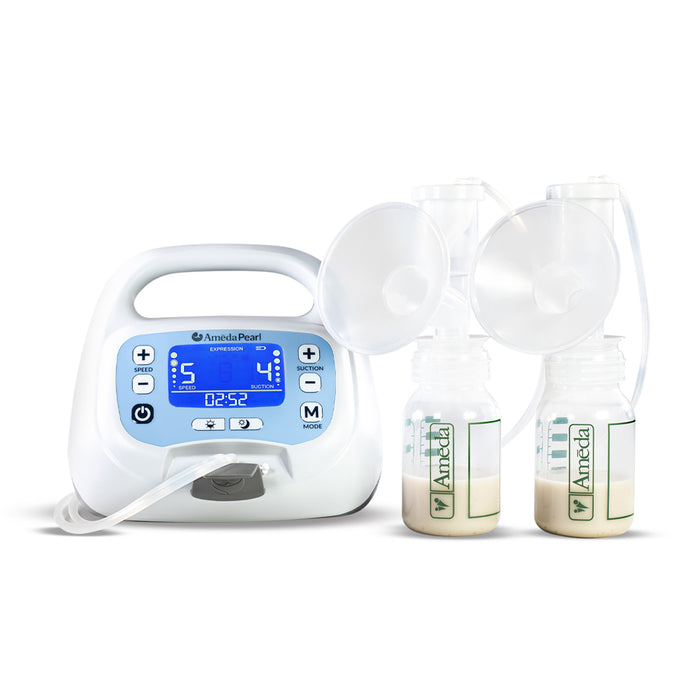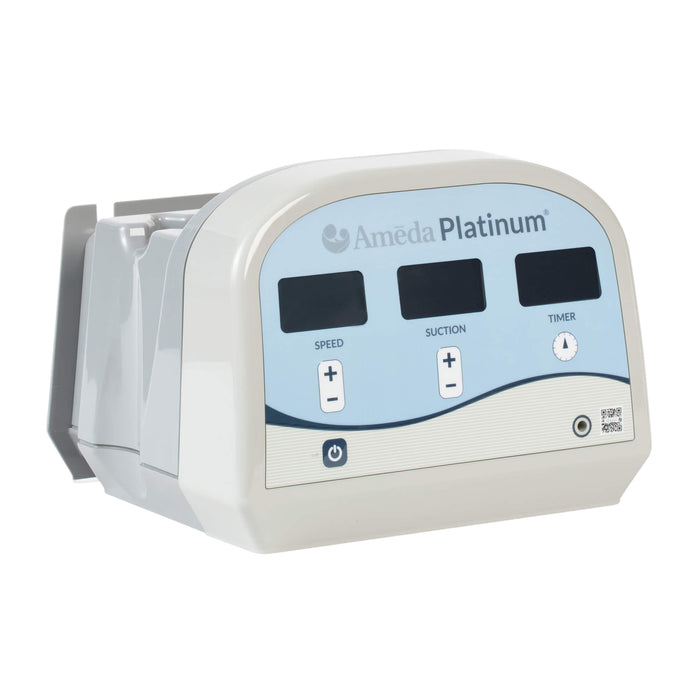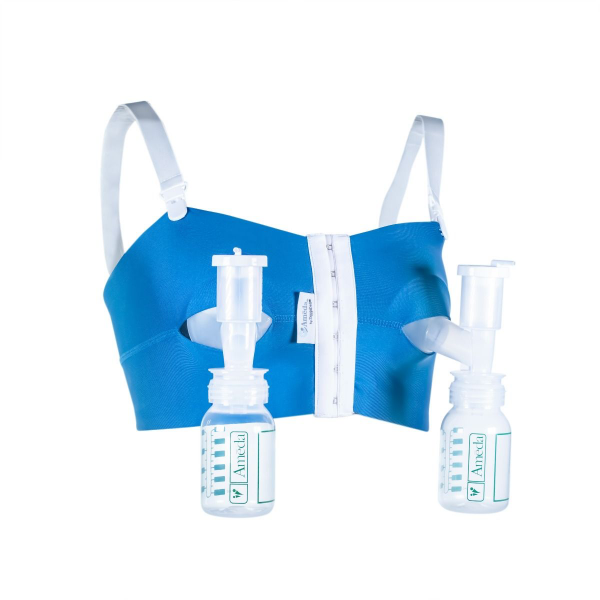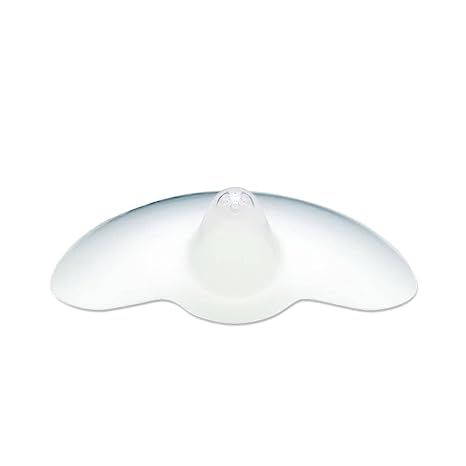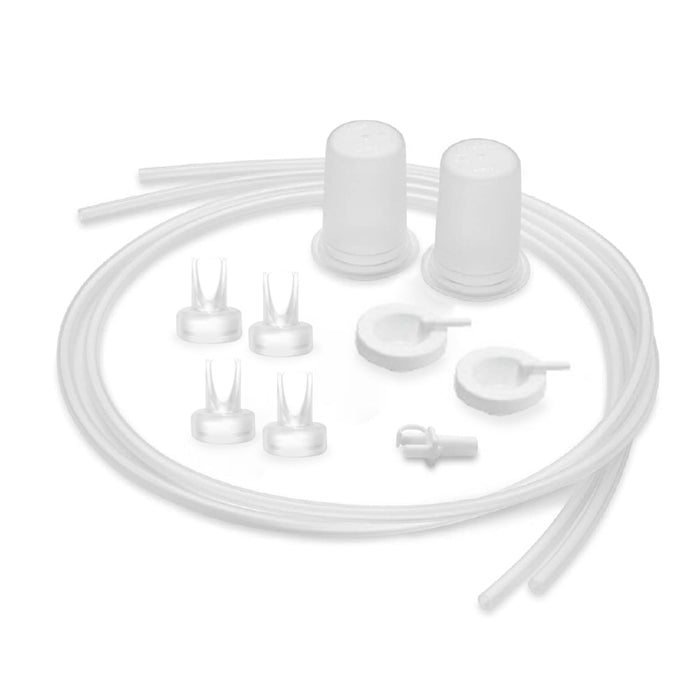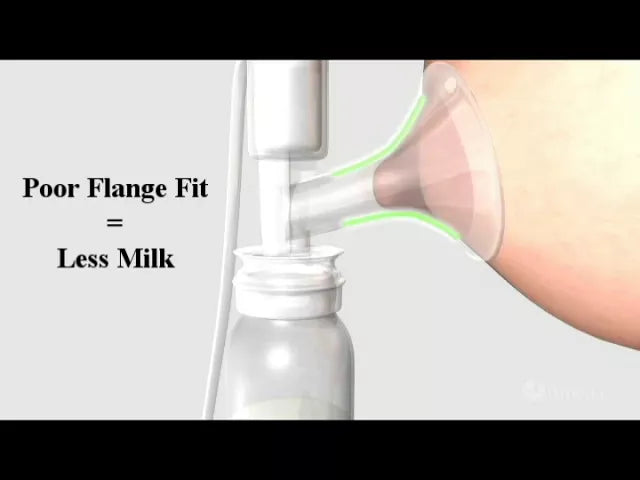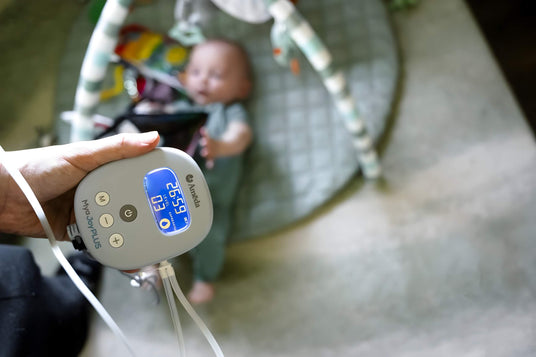
Choosing the Right Breast Pump: A Complete Guide
Whether you’re building a registry, planning to return to work, or preparing for exclusive pumping, finding the right breast pump can be a game-changer. With so many models and features to choose from, it can be hard to know where to start. In this guide, we’ll walk you through how to choose a breast pump that meets your lifestyle, budget, and milk supply needs.
Understanding the Types of Breast Pumps
-
![A breast pump with a white and green design. The device features a circular flange attached to a clear plastic dome on top, which connects to a transparent bottle below. The bottle has measuring marks and the brand name "Amameda" visibly displayed. The overall shape is ergonomic, emphasizing ease of use for breastfeeding mothers.]()
Manual Breast Pumps
Manual breast pumps are lightweight, affordable, and a great choice if you only pump occasionally. These pumps rely on hand-powered suction and don’t require a wall outlet or batteries. For some parents, a manual pump like the Ameda Portable Manual Breast Pump serves as a reliable backup pump or travel option.
-
![Ameda Mya Joy Plus breast pump with LED display turned on, flanges, and milk collection bottles, displayed on a white surface.]()
Electric Breast Pumps
Electric pumps are the most common choice for parents who need to pump breast milk regularly. These pumps are powered by electricity or batteries and are generally more efficient than manual options. Electric pumps can be single or double.
- Single Electric Pump: Pumps one breast at a time. Great for occasional use or for parents who plan to nurse mostly.
- Double Electric Pump: Pumps both breasts simultaneously. Ideal for building milk supply and saving time. The Ameda Mya Joy and the Ameda Mya Joy PLUS are both compact, powerful double electric models.
-
![Ameda Platinum breast pump control panel with plus and minus buttons for speed and suction, and a timer display.]()
Hospital Grade Breast Pumps
Hospital-strength pumps like the Ameda Pearl and Platinum are durable, multi-user pumps designed to support moms with medical needs, low milk supply, or those establishing milk production. Often used by parents with premature babies, low milk supply, or special medical circumstances, these pumps are known for their efficiency and comfort. The Ameda Pearl and the Ameda Platinum are trusted by hospitals and lactation consultants for their proven performance and reliability.
-
![Two Ameda wearable breast pumps with a round, white and clear design, pink top panel, and digital display, designed for hands-free milk expression.]()
Wearable Breast Pumps
Wearable pumps like the Ameda GLO Wearable Breast Pump allow you to pump discreetly and hands-free. These lightweight pumps fit into a bra and are ideal for multitasking, traveling, or returning to work. Portable and quiet, wearable pumps are increasingly popular among busy parents. While wearable pumps offer unmatched convenience, many parents also use a traditional pump to support their full pumping routine.
Factors to Consider When Choosing the Right Breast Pump
Lifestyle and Frequency
- Occasional pumping: If you only pump occasionally, a manual pump or single electric pump can be a simple and affordable choice.
- Pump regularly: If you pump regularly, consider a double electric, wearable, or hospital-strength pump to save time and support supply.
- Exclusively pumping: If you exclusively pump, choose a hospital-strength or high-performance double electric pump made for frequent use.
Portability and Power Source
Consistent, effective pumping is important for maintaining milk supply—especially when exclusively pumping or supplementing breastfeeding. If you plan to pump away from home, look for a portable or wearable pump with a rechargeable battery or USB charging. Pumps that require a wall outlet are best for at-home or bedside use.
Pumping Comfort
Choose a pump with adjustable suction levels and cycle speeds to help personalize your comfort. This can help mimic your baby’s natural nursing rhythm and support better milk flow. Using a hands-free pumping bra can make pumping more comfortable and convenient—especially if you pump often.
Suction Strength and Efficiency
Understanding how a pump works—whether it uses single or two-phase suction—can help you find a model that better mimics your baby’s natural nursing rhythm. Suction strength varies by pump, so if you're trying to build or maintain milk supply, look for a pump with strong, adjustable suction. Hospital-strength and high-performance double electric pumps typically offer the best support for milk production.
Insurance Coverage
Many insurance plans cover breast pumps. Before purchasing, check whether your insurance covers breast pumps and which models are included. Your lactation consultant or OBGYN can also help with documentation.
Insurance PlansComparing Popular Ameda Pumps
Pumping Accessories to Consider
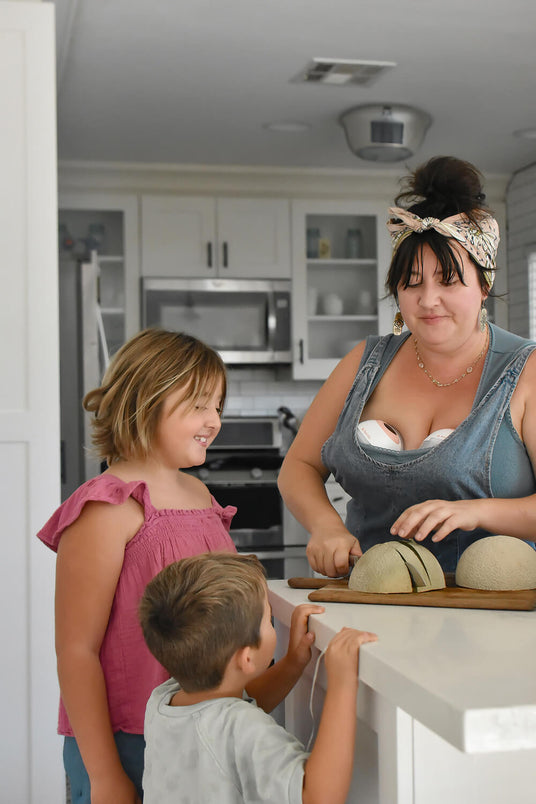
How To Pump Milk Efficiently
- Pump consistently to support your milk supply—especially if you're not breastfeeding.
- Use a double electric pump to express both breasts at once - this can save time and help increase output.
- Adjust suction to your maximum comfort vacuum—the highest level that’s effective without causing discomfort.
Refer to your pump’s instruction manual for cleaning and usage guidelines. All Ameda breast pumps include a printed instruction manual, and digital versions are also available at www.ameda.com for easy access.
Frequently Asked Questions
How much milk should I expect to pump?
How much milk should I expect to pump?
Milk output varies by mom and by session. Many moms express 2–4 ounces total, while others may pump more or less depending on the time of day, frequency of pumping, and baby’s nursing habits. If you're returning to work or need more flexibility, a reliable pump can help you express efficiently and support your feeding routine.
Can I use my pump at work?
Can I use my pump at work?
Yes—many moms use a wearable or portable double electric pump at work. Choosing a quiet pump can make sessions easier and more discreet during a busy workday. Ameda also offers a Universal Breast Pump Carrying Case to help keep your pump and parts organized and ready to go.
What if I only pump one breast?
What if I only pump one breast?
All Ameda pumps can be used for single or double pumping. Thanks to our pump design and HygieniKit® system, you can easily pump one side while nursing on the other or when full expression from both sides isn’t needed.
What are good backup options?
What are good backup options?
A manual, wearable, or portable pump can all serve as reliable backup options for travel, work, or unexpected situations. Ameda’s wearable pump is fully hands-free with no tubes or power cords, while our portable pumps (like Mya Joy and Mya Joy PLUS) offer strong performance in a lightweight, travel-ready design.
What are the best pumps for comfort?
What are the best pumps for comfort?
A good breast pump offers adjustable suction power, quiet operation, and customizable settings. Look for one that fits well with your breast shield size and has minimal parts to clean.

Find the Perfect Breast Pump with Ameda
Choosing the right breast pump depends on your lifestyle, comfort, and feeding goals. Whether you’re exclusively pumping, returning to work, or building a freezer stash, Ameda offers a range of pumps to match your needs. From the powerful Ameda Platinum hospital-grade pump to the portable Mya Joy or Mya Joy Plus and hands-free GLO Wearable Pump, Ameda supports you at every stage.
Need help deciding? Our team is here to guide you. Let us help you find the right pump, so you can focus on what matters most—your baby and your well-being.
Flange size matters.
You wouldn’t buy any bra off the rack without checking the size on the label. But what fewer new moms realize is that the same principle applies to pumping. Your best flange fit might be different from the mom next to you.
Need More Guidance?
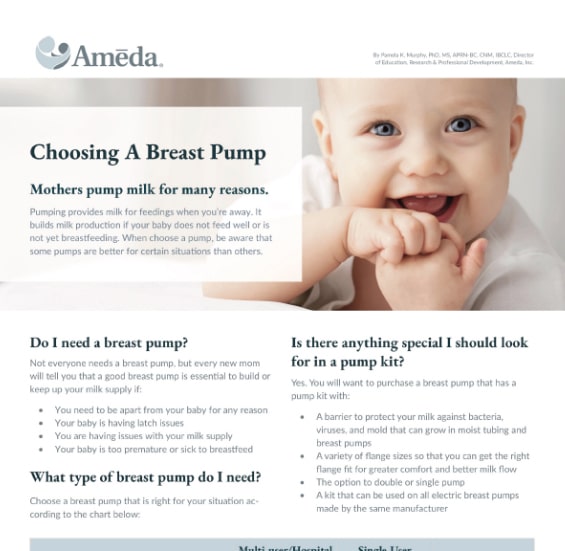
Choosing a Breast Pump
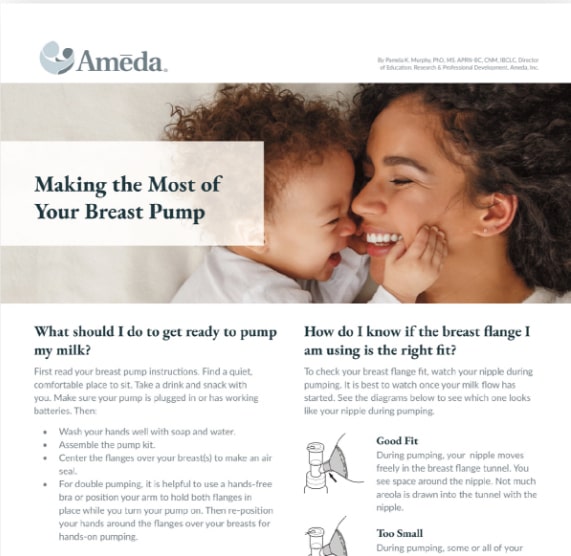
Making the Most of Your Breast Pump


